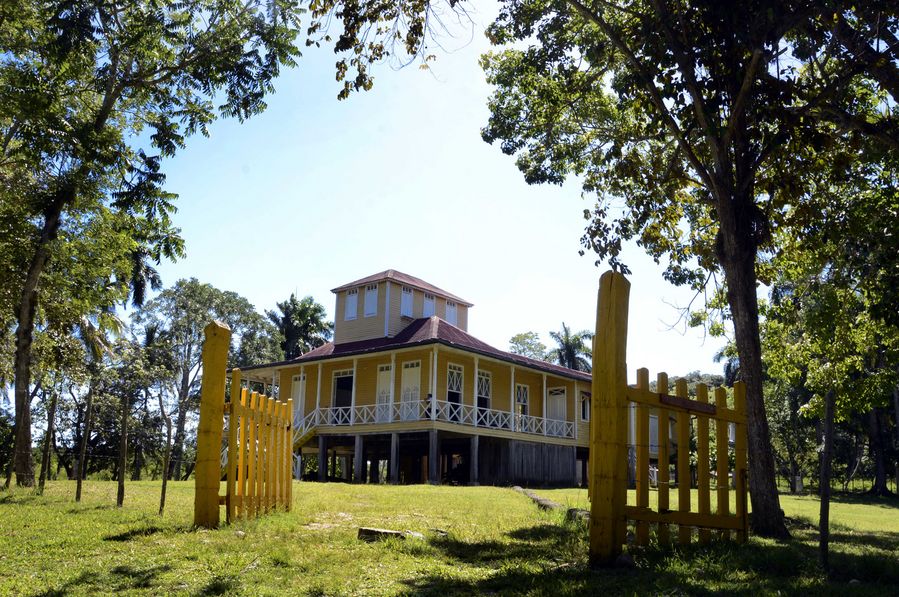
The house where Fidel Castro lived in his childhood, with his parents and siblings, sits in the town of Biran, in the province of Holguin, more than 700 kilometers from Havana, capital of Cuba, July 21, 2019. (Xinhua/Joaquin Hernandez)
The Castro family homestead in this tiny hamlet in Cuba's eastern Holguin province has become a must-see attraction for Cubans and foreigners alike interested in the legacy Fidel and his brothers Raul and Ramon left behind.
HOLGUIN, Cuba, Aug. 12 (Xinhua) -- Nestled amid the lush green landscapes of the Cuban countryside, the small village of Biran was cast into the spotlight as the birthplace of late Cuban revolutionary leader Fidel Castro, who would have turned 93 on Tuesday.
The Castro family homestead in this tiny hamlet in Cuba's eastern Holguin province, named the Biran Historic Complex, has become a must-see attraction for Cubans and foreigners alike interested in the legacy Fidel and his brothers Raul and Ramon left behind.
"Here you can see the whole process of the historical development of this place ... from the turn of the 20th century until the triumph of the Cuban Revolution and the process of distributing the land to the farmers," said the complex's director Lazaro Castro, who is unrelated to the Castro family.
Looking back in history, Spanish-born Angel Castro Argiz and his Cuban wife, Lina Ruz Gonzalez, owned a 26-hectare sugar plantation on which they raised seven children, including two future presidents, Fidel and Raul.
After the triumph of the 1959 Revolution, Fidel launched Cuba's agrarian reforms by giving away the plantation to the peasants who worked the land.
What draws people's attention first to the complex is the family pantheon that holds the remains of Fidel Castro's parents, grandparents and siblings. Castro himself requested that his ashes be deposited at the Santa Ifigenia cemetery in the nearby city of Santiago de Cuba.
The family's 10-room home, destroyed in a fire in 1954 and later rebuilt, serves as one of the main buildings and historical repositories. Though being mostly a replica, it preserves the room where Castro was born, as well as the part of the house the three brothers shared.
A small schoolhouse preserves the 33 desks at which local students sat, including the one that young Fidel occupied in the front row when he was learning to read.
A little further away is the spacious house Angel built for his son Fidel after he graduated from law school, hoping he would return to live and work on the family plantation. That did not pan out, but the building did serve as an alternative family residence following the 1954 fire.
Visitors can also stop by the mail-telegraph office, butcher shop, home of Grandma Dominga, the hotel, main street, bakery-candy store, La Paloma bar and cockfighting ring. The small cinema is long gone, but endures in the memory of the locals.
The complex, which displays some 1,700 objects of historical value, was declared a national monument in 2008.
"Angel Castro built a small community where you could find all the services the more or less 150 residents who lived here might need," said Lazaro Castro.
"In every corner of this place, both Fidel and Raul, and the other siblings, are alive and teaching us more and more how we can and should do things," said Lazaro Castro.



